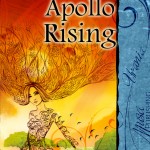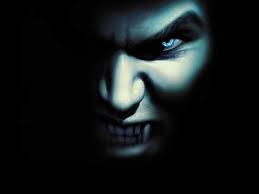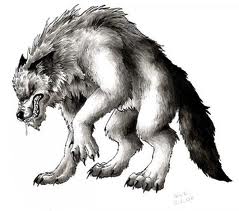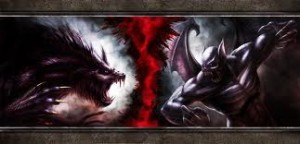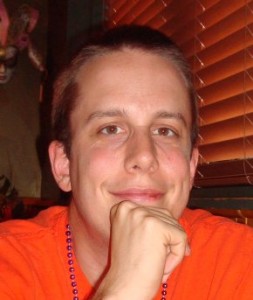The need for a set of mythology is part of the human condition. Much about our world frightens us or makes us feel very, very small and insignificant. You can see this tendency when we look at a mother comforting her children, who are often the most honest with their fears. Thunder and lightening? That isn’t frightening little one. It’s just Thor using Mjölnir to protect us from the Ice Giants. Something mysterious and frightening is now an ally, a protector. If only I can blame Loki for all the socks that go missing in the wash. As always, I ask the question: as writers, how can we use mythology to make our works better? Let’s take a simple origin story for a city-state and work through the implications together, shall we?
“The city of Jesquat has not always been the mightiest principality of the Tabbet Empire. No, young ones, before the bustling market squares and efficient ports, noble halls of learning and mighty walls came to be, the land we now stand upon was wild and untamed. Barbarians roamed our lands and though the thousand eyes of the One God gazed down each night, though there was no one to worship.
Then, there came the First peoples. They were mighty and experienced seamen, long from home and succor, brave and strong. When the demons of storm and sea sought to destroy them, they fought back valiantly, but inevitably, few survived and their vessel was lost. For three nights, the One God’s thousand eyes watched the Firsts as many of their number struggled to hold off the final dawn. By the third day, the former crew had fractured, deprived of unity and direction as the dawn claimed their captain. Lacking the tools and skills to repair the wreckage of their craft, plagued with memories and longing for home, many risked the trek through the wild frontier. Of those that remained, only three names have survived to be whispered today.
Bae’ren lead. Captain’s seneschal and daughter of the Primaka of her homeland, she had been trained from birth to be a leader to her people. Though she had the authority and right to demand the service of departed-lost, she let them to their wanderings. Bae’ren knew that those who left the sea were doomed to death and despair, but she was wise and benevolent and with heavy conscience let the departed-lost chart their own trek. Bae’ren became the first Primaka of our people.
Aben’rah made. Ship’s carpenter and quartermaster, his hands were nearly as clever as his tongue. Through hard work and ingenuity, he made a life for the Firsts in the wild and unforgiving land. Aben’rah knew that if the Firsts were to survive, it would be by their sweat and blood, so with dedication and fervor he taught his crafts. Aben’rah became the first Lord Builder of our people.
Oman’tak defended. Ship’s guardian and first spear, he fought for the Firsts in the name of the One God. Though injured in the destruction of his charge, the sharpness of his will and the trueness spirit remained, and he safeguarded the Firsts from dangers of the wild and wildmen. He knew that his spear alone was insufficient to maintain the lives of the Firsts, so he trained any who would learn. He became the first Guardian-General of our people.
And so, under the guidance and succor of the First Three, our people thrived and grew, built and prospered, were safe guarded and established an empire.”
So, let’s start thinking aloud. I like to start with history and politics as it allows me to put up the skeleton of the culture. In this case, I would say that the people of Jesquat likely claim origins from a group of seafarers who were stranded where the city stands. As myth, especially origin myth, usually only resembles history, it is unlikely that the series of events were exactly as plotted in the story. For example, it is unlikely that the actual names have remained intact over the centuries since the founding of Jesquat. Instead, I’d establish that Jesquat is ruled by a triumvirate, the Primaka, the Lord Builder and the Guardian-General, with prestige in that order. Together, they would be called the “First Three,” like they were in the legend. The myth also mentions that Jesquat is a principality in an empire, that it was the first town in the area and that the empire expanded from Jesquat. This would mean that Primaka would be effectively equivalent to a renaissance Italian prince, so I could draw inspiration from those courts in regard to future world building. Also, the Primaka is woman in the legend, so is this position traditionally female? Likewise, are the Lord Builder and Guardian-General both traditionally masculine roles?
Next, I like to look to religion. The myth mentions a “One God” whose eyes are the stars. If the people of Jesquat maintained a sea faring lifestyle, then this would make sense as navigation could be easiest at night. I could then tie in religious significance to economics and travel. There is already established significance tying death to the dawn, so is birth tied to dusk? What is the mythological significance to daylight? Topics I will have to examine in greater detail. The “Firsts” are held in high regard according to the myth, so is there some aspect of ancestor worship amongst the Jesquati? If so, do spirits of significant people become one of the stars? Does the religion have a centralized leadership or is it family by family?
Now, looking at economics and immigration, as the myth’s introduction mentions “bustling market squares and efficient ports,” and Jesquat is mentioned to be a principality, so I would make Jesquat to be a trade city. Local food would be grown outside the walls by small farming communities and then traded at market for necessities they cannot make. Jesquat is a walled city according to the myth, so either there is no expansion beyond the walls, in which case, immigration is relatively low and real-estate is at a premium, or there has been expansion beyond the walls and the upper class and very wealthy live inside the walls. I personally favor the second as it allows for more cultural variation within the city itself which will make it easier to make the milieu rounder.
Finally, I would mine this myth for linguistic and other miscellaneous cultural trends. When I structured the myth, I was imagining a grandfather passing down the knowledge to a brood of grandchildren. It made sense, then, for the myth to take the structure of an oral tradition with the repetition of paired descriptors and the structuring of paragraphs three, four and five from a common template. For a trade city to be successful on an empire-scale, there must be some form of written language or accounting, but universal literacy isn’t necessarily a requirement. So then, are performance arts such as public theater or professional bards a form of cultural entertainment and dissemination of knowledge? How common are books, and what are the literacy rates amongst different levels of the populace?
Also, I’d take a look at the names in the myth. All three names are compound names. This could be a cultural trend, but I like the idea of using suffixes to distinguish prestige, so common names would be one or two syllables with no suffix. The Primaka would take the suffix “ren, the Lord Builder “rah and the Guardian-General “tak. I could then structure hierarchies of suffixes that are subordinate to “ren, “rah and “tak but linguistically similar amongst their own population. I would then have to create additional hierarchies as honorifics amongst the various social classes (such as merchants or within families). Also, the masculine names mentioned in the myth have a vowel-consonant-vowel-consonant pairing structure, allowing me to develop a grouping of “traditional” Jesquati names. The feminine names would likely start with consonants but have fewer restrictions than the masculine names based on the sample from the myth.
The origin myth I developed for Jesquat resulted in more questions than answers, but it gave me places to start asking those questions in the development of my milieu. By creating several other myths or histories that tie into the origin myth of the Firsts, I would be able to start pinning down more and more details from which the milieu could be built. I do not start all milieus this way, but it is often an entertaining way to begin and has helped me overcome writer’s block. Turning back myth and legend is a way to begin, whether it be by the tales of a culture long gone and remembered mostly for their mythology, or a mythology created by an author to enhance milieu.


